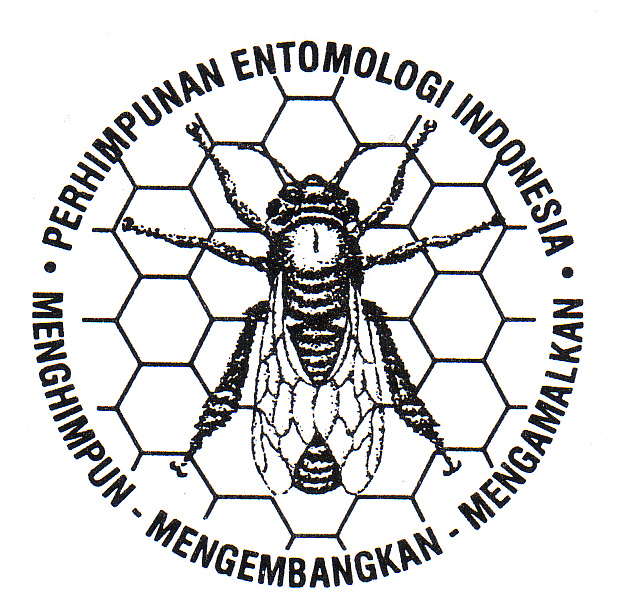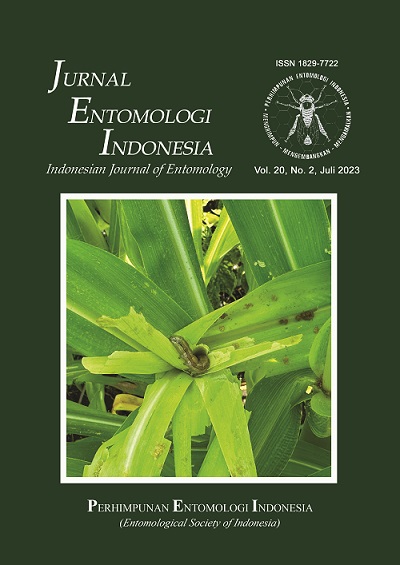Keanekaragaman dan komposisi spesies laba-laba predator dan parasitoid Hymenoptera pada tanaman jagung dengan dan tanpa refugia pada musim yang berbeda
Diversity and species composition of predatory spiders and Hymenopteran parasitoid on maize fields with and without refugia in different seasons
DOI:
https://doi.org/10.5994/jei.20.3.258Keywords:
ecological engineering, habitat manipulation, natural enemyAbstract
Refugia are plants that play an important role in the conservation of natural enemies in agroecosystem. Refugia plants are useful for providing shelter and host/prey for natural enemies, especially parasitoids and predators. This study was aimed to investigate the effect of refugia and different planting seasons on the diversity and species composition of natural enemies (especially predatory spiders and Hymenoptera parasitoids) in maize fields. Field research was conducted in two different seasons i.e., dry season (April to July 2022) and rainy season (September to December 2022) in Tumpang Village, Malang District. The maize fields for the study were grouped into four different areas, with two observation plots (size 40 m × 50 m) in each area, consisting of a monoculture maize field (control plot) and a maize field with refugia plants (treatment plot). Sampling was conducted using pitfall traps (for predatory spiders) and yellow traps (for Hymenoptera parasitoids). Traps were set for 1 × 24 hours and conducted at 2, 4, 6, 8, 10 and 12 weeks after planting. The results from two planting seasons were obtained predatory spider diversity amounted to 626 individuals consisting of 7 families, and 40 morphospecies, while Hymenoptera parasitoids amounted to 787 individuals consisting of 5 families, and 63 morphospecies. Based on generalized linear models analysis, it was found that refugia planting did not affect the diversity of natural enemies, but affected the species composition of predatory spiders. Different planting seasons affect the diversity and species composition of predatory spiders as well as Hymenoptera parasitoids.
Downloads
Published
How to Cite
Issue
Section
License
Copyright (c) 2023 Fahmi Risyad Sulthoni, Hagus Tarno, Akhmad Rizali, Windra Priawandiputra, Damayanti Buchori, Midzon Johannis

This work is licensed under a Creative Commons Attribution 4.0 International License.
Authors who publish with this journal agree to the following terms:
- Authors retain copyright and grant the journal right of first publication with the work simultaneously licensed under a Creative Commons Attribution 4.0 International License that allows others to share the work with an acknowledgement of the work's authorship and initial publication in this journal.
- Authors are able to enter into separate, additional contractual arrangements for the non-exclusive distribution of the journal's published version of the work (e.g., post it to an institutional repository or publish it in a book), with an acknowledgement of its initial publication in this journal.
- Authors are permitted and encouraged to post their work online (e.g., in institutional repositories or on their website) prior to and during the submission process, as it can lead to productive exchanges, as well as earlier and greater citation of published work (See The Effect of Open Access).








